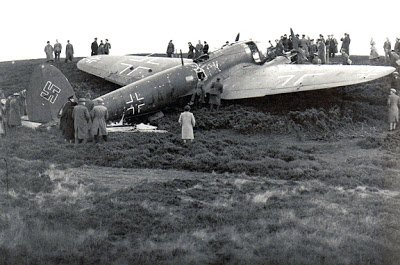Our history
Here are a few interesting snippets of local history. Some are taken from a blog by Richard Havers who expressed a wish that they are preserved on a more permanent website
The name Lammermuir could be derived from the Gaelic, An Lomair Mor, meaning “level spot on the big height” or from the Old English words lambra and mor meaning “lambs’ moor”.
The Northumbrian missionary bishop Cuthbert spent his early years as a shepherd on the Lammermuir Hills.
Battle of Flodden
Ellemford was a regular muster site for Scottish armies in the Borders. James IV mustered here in 1513 before the Battle of Flodden and it is said that he prayed at Ellem Kirk before to advancing to the border.
He died at Flodden on 9 September. The church is now virtually invisible apart from a small section of wall covered in undergrowth.
Robert Burns
On 5 May 1787 Robert Burns and his friend Robert Ainslie left Edinburgh for a tour of the Borders. Both men were lovers of wine and women and the odd song, so they forged a natural friendship.
On their route they passed through Gifford, Longformacus and Duns. In his diary he wrote “Lammermuir hills miserably dreary, but at times very picturesque.”
Sir Walter Scott
Sir Walter Scott published an historical novel “The Bride of Lammermoor” in 1819. The novel is set in the Lammermuir Hills in the 17th century and tells of a tragic love affair between young Lucy Ashton and her family’s enemy Edgar Ravenswood.
Scott indicated the plot was based on an actual incident. The story is the basis for Donizetti’s 1835 opera Lucia di Lammermoor.
Ellem Old Inn
This image of Ellem Old Inn dates from 1840, this advert from twelve years later (1852).
Ordnance Survey Map
The Ordnance Survey map of the area surveyed in 1857 can be found here, courtesy of the National Library of Scotland.
Ellemford Bridge
In spring 1860 Mr. N.D. Shaw a contractor from Perth began work on the construction of a new road between Ellemford and Smiddyhill for the Road Trustees of the county of Berwick. The road to be built was three miles long and included the erection of two bridges over the Whiteadder. The bridge at Ellemford consists of three arches of 40-foot span each and the one at Smiddyhill was a single arch of 50 feet. The estimated cost of the work was £5,000.
Mrs Mack’s House
This picture, taken some time towards the end of the 19th century is of Mrs Mack’s house which was next to her sawmill. In the centre of the picture is the bridge at Ellemford, so the picture is post 1860 and behind it Todlea, although at this point it had only one story, not the two that it has now. The site of this is in the garden of what is now Woodman’s Cottage, which was built right at the end of the century. The other picture (click on photo) is from a slightly different angle and shows the hills behind, without the fir trees as they have today.
The Rathburne Hotel
This advert from August 1950 has the line – “out of the world and into Longformacus”
German Bomber Crashes in the Lammermuirs
In late October 1939 pilots of the Auxiliary Air Force shot down this Heinkel HE III bomber. It crashed on the top of the Lammermuir Hills not far from Mayshiel. According to the Scotsman.
Whiteadder
The ‘Historic Heart of the Lammermuirs’ is an archaeological project that gives you the opportunity to investigate the history of the local landscape!










